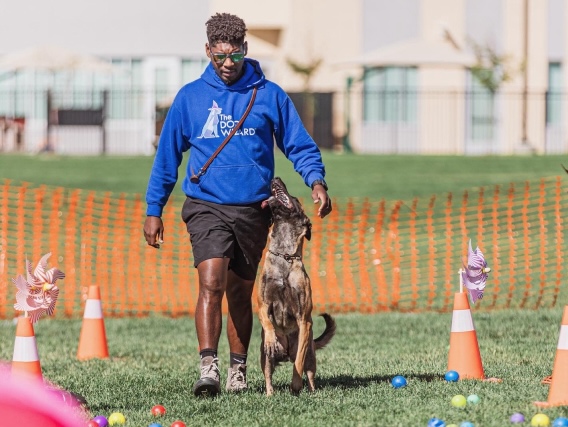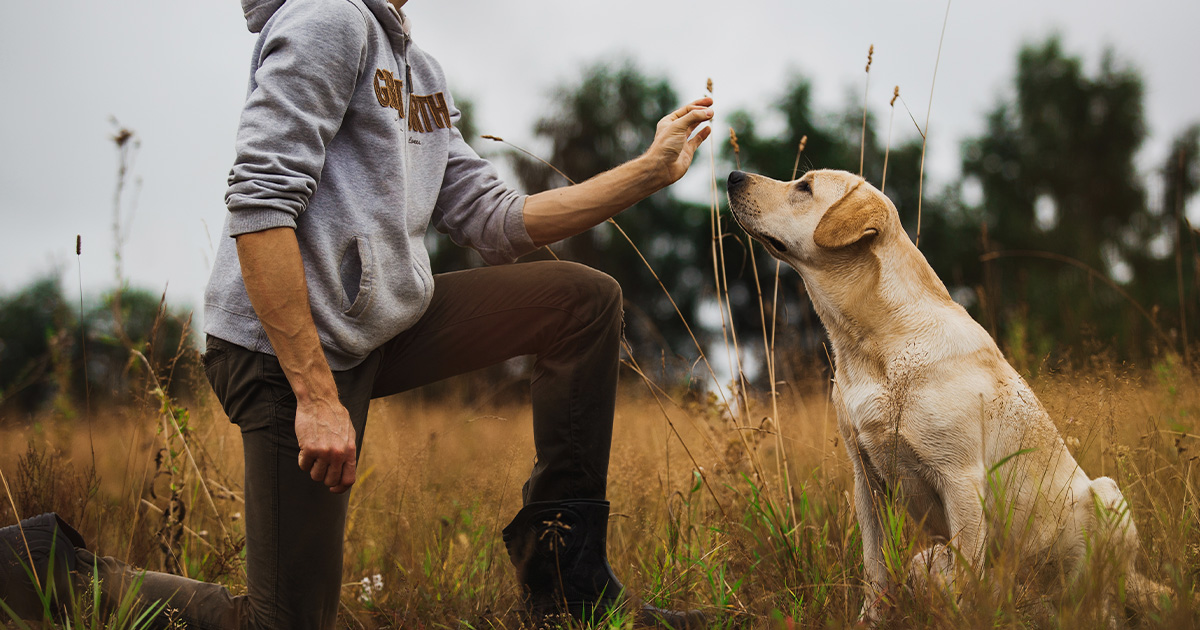Dog Training for First-Time Pet Owners: What You Need to Know
Dog Training for First-Time Pet Owners: What You Need to Know
Blog Article
Newbie's Guide to Successful Pet Training at Home
Efficiently educating a pet dog at home calls for a nuanced understanding of canine behavior and efficient communication strategies. Establishing clear training goals, using premium incentives, and maintaining consistency across household participants are crucial aspects. Integrating training right into daily regimens can boost both involvement and retention.
Comprehending Pet Dog Behavior
Understanding dog behavior is vital for efficient training and cultivating an unified connection in between humans and their canine buddies. Pet dogs interact primarily with body language, articulations, and facial expressions, making it crucial for owners to interpret these signals properly. Identifying behaviors such as tail wagging, grumbling, or trembling can supply insights into a canine's emotion and purposes.

Usual behavior problems, such as aggressiveness, anxiety, or extreme barking, typically originate from misconceptions or unmet requirements. Observing and resolving these issues without delay can prevent escalation and make sure a positive training experience. By promoting a deep understanding of pet actions, owners can tailor their training approaches to match their canine companions, eventually resulting in a pleased and mannerly pet.
Important Training Tools
A well-appointed training space can considerably boost the performance of canine training in the house. Necessary training tools make certain that both the canine and the instructor can involve in efficient sessions that promote learning and bonding.

Purchasing a durable chain and a comfortable, well-fitting collar or harness is important for safety and control. These devices help develop limits and ensure the pet stays secure throughout training. Additionally, a designated training location, totally free from diversions, aids focus for both the fitness instructor and the dog.
Educating aids such as training pads, cones, or agility tools can likewise boost the experience by introducing range and obstacles. Having a note pad or electronic app for tracking development can be very useful, permitting you to note successes and areas for improvement. Using these important devices will certainly create a positive training atmosphere and lay the structure for efficient discovering.
Developing a Training Routine
Developing a consistent training routine is vital for reliable pet dog training at home. A well-structured routine not only assists in enhancing preferred actions more helpful hints however likewise supplies your pet with a complacency and predictability. To develop a reliable training regular, begin by identifying details training objectives, such as standard commands, leash walking, or housebreaking.
Select an assigned time each day for training sessions, ideally when your canine is sharp and responsive. Sessions must be short, around 5 to 15 minutes, to keep emphasis and protect against exhaustion. Uniformity in timing and atmosphere will improve your canine's knowing experience.
Incorporate training into everyday activities to reinforce skills. For instance, practice commands throughout walks or mealtime, which integrates discovering right into natural routines. Additionally, remain flexible and adjust the regular as essential, suiting your pet dog's power levels and mood.
Positive Reinforcement Techniques
Favorable support strategies are essential to effective dog training, advertising wanted actions through incentives instead than penalty. This technique uses favorable stimuli, such as treats, praise, or play, to encourage pet dogs to repeat details activities. The keystone of this method is timing; rewards ought to be given right away complying with the desired habits to create a clear organization.
When executing favorable support, it is crucial to select incentives that are inspiring for your dog. High-value treats, such as small items of poultry or cheese, can be particularly efficient throughout training sessions. Additionally, varying the incentives can maintain your pet dog's passion and enthusiasm.
Beginning with straightforward commands, like "rest" or "stay," and slowly progression to more complex jobs. Consistency is essential; guarantee that all household members utilize the very same commands and benefit systems to prevent confusion.
In addition, it is crucial to remain individual and prevent aggravation. Pets, like people, discover at their very own Related Site pace. By promoting an encouraging training environment through favorable support, you can enhance your canine's understanding experience while reinforcing the bond between you and your fuzzy friend, laying the groundwork for effective training outcomes.
Common Training Difficulties
While educating a dog in your home can be a satisfying experience, it often comes with a collection of usual obstacles that can test both patience and consistency. One common issue is disturbance. Pets might become quickly sidetracked by noises, motions, or perhaps scents in their environment, making it challenging to preserve their focus during training sessions.
One more difficulty is disparity in commands and reinforcement. If relative utilize different cues or rewards, it can hinder and confuse the pet development. Establishing a unified strategy is a knockout post necessary for effective communication.
Additionally, pet dogs can experience irritation or stress, especially if they do not recognize what is anticipated of them. This can bring about unwanted behaviors, such as chewing or barking.
Ultimately, the timing of support is important (Dog training). Postponed rewards can diminish the efficiency of favorable support, as canines might stop working to connect the actions with the incentive
Getting over these challenges calls for dedication, clear interaction, and an organized training plan. Recognizing and attending to these common barriers will lead the way for a more enjoyable and effective training experience in your home.
Conclusion
In conclusion, successful pet training at home requires a comprehensive understanding of canine behavior and efficient interaction strategies. By developing clear training objectives and utilizing premium deals with together with favorable support, the training procedure becomes more rewarding for both the instructor and the pet.
Developing a consistent training routine is important for efficient dog training at home.Positive reinforcement strategies are basic to efficient pet dog training, promoting preferred behaviors via incentives rather than punishment (Dog training). By promoting a helpful training atmosphere with favorable reinforcement, you can improve your canine's knowing experience while enhancing the bond in between you and your hairy friend, laying the foundation for successful training end results
In conclusion, effective pet training at home demands an extensive understanding of canine actions and reliable interaction methods. By establishing clear training goals and making use of high-grade deals with together with positive support, the training procedure ends up being much more gratifying for both the fitness instructor and the dog.
Report this page